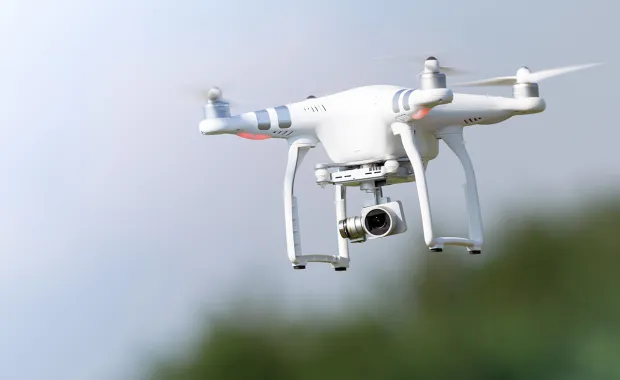CGI has been awarded a contract by the European Space Agency (ESA) to develop a proof of concept to enhance the navigational capabilities of airspace users in areas where traditional navigation systems alone cannot provide sufficient performance. Future aircraft, such as unmanned aerial vehicles (UAV) and innovative air mobility solutions, will need to operate safely beyond visual line of sight (BVLOS) within cities and other built-up areas, where the signals of global navigation satellite systems (GNSS) are often disrupted.
The concept being developed by CGI and its partners leverages 5G networks, alongside traditional navigation systems, to provide hybrid-positioning solutions. In addition to secure communications for command and control of vehicles, and delivery of high-quality streaming video for BVLOS operations, 5G networks also can be used as a source for navigational bearings that will improve the accuracy, integrity and availability beyond that which satellite navigation systems alone can provide. The service also will offer greater resilience against natural or intentional disruption of positioning, navigation and timing (PNT) services.
Andy Proctor, UK Lead Delegate to the ESA Programme Board for Navigation & PNT Innovation lead at UK Research and Innovation (UKRI), said:
“The UK is a leading innovator in aerospace and GNSS technology. It’s great to see the team developing resilient PNT solutions for aerospace leveraging existing communication infrastructure. The 5G-PNT project will enable and promote future aviation applications in the UK and globally, especially in the fast-growing future air mobility sector that will enable wider economic growth in many key sectors.”
John Hanley, Senior Vice-President for UK & Australia Secure and Assured Space Solutions at CGI said: “This exciting project brings together PNT and mission-critical systems integration expertise to advance the enabling technologies for future navigation applications. The challenges posed by PNT service disruption have become a significant concern for operators and regulators and this project will help improve navigation capability to support both this challenge and further development of the aerospace sector.”
CGI will work with ESA, u-blox, the Advanced Communication, Mobile Technology and IoT (ACMI) Research Centre at the University of Sussex and air navigation service provider NATS, to define use cases and system requirements for a 5G-based complement to existing GNSS receivers. This hybrid navigation solution will be targeted at installation on any air vehicles intended to operate within the coverage of commercial 5G networks. The project will culminate in a real-world demonstration of the technology, comparing its performance to that offered by GNSS alone. The limitations of GNSS stem from interference, jamming, spoofing and obstruction, particularly in urban areas where buildings and other structures affect signal availability and other sources of interference are more prevalent. Aerial vehicle operations therefore require additional positioning systems to achieve acceptable levels of operational safety.
CGI has been delivering complex, mission-critical space software systems supporting satellite navigation, communications and operations, to space enabled applications for over 40 years.
*The view expressed herein can in no way be taken to reflect the official opinion of the European Space Agency and NATS.




